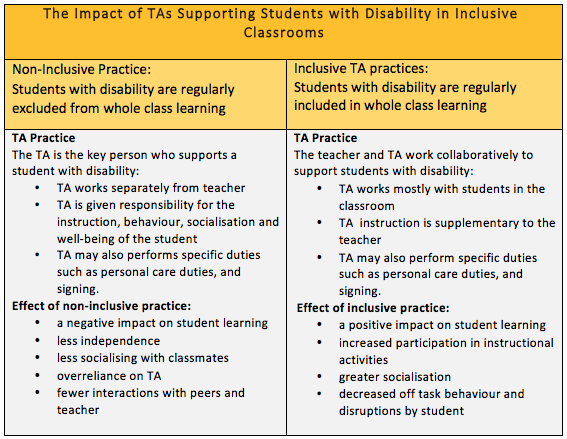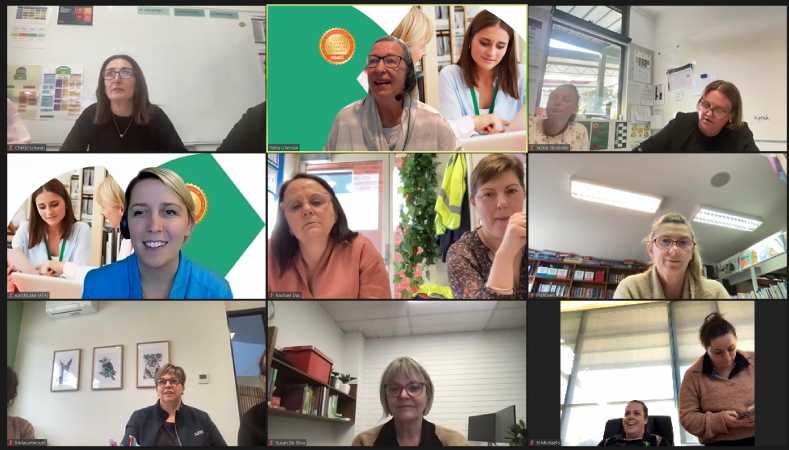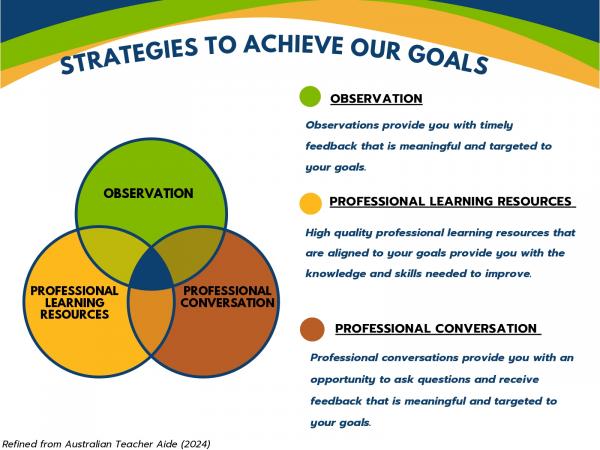Inclusive Practices In Schools - Who Is Responsible?
A distressed teacher aide recently contacted Australian Teacher Aide to ask for help. She told us that a friend's daughter, who is studying teaching at an internationally recognised university, was told that:
‘teacher aides are becoming redundant because they exclude the child from the inclusive learning environment and they are only engaging with the teacher aides, and teacher aides are hindering inclusion and social justice in education.'
The notion of blaming teacher aides, as this statement suggests, is no solution to more inclusive practices in schools and is akin to ‘throwing the baby out with the bathwater’.
This thinking is great cause for concern and has distressed a large group of TAs. Perhaps a more proactive approach is for teacher education programs to explicitly address the changing role of teacher aides, and give our future teachers the skills to work effectively with teacher aides in an inclusive learning environment.
 Inclusion of students with disability
Inclusion of students with disability
Inclusion of students with disability in regular classroom settings has increased significantly in the past two decades, and led to the employment of a growing number TAs, in Australia and internationally.
There is little dispute that the duties performed by TAs can be an invaluable help to teachers, by providing additional classroom support to students with disability, so they can participate fully in their education.
The debate therefore should not be about whether schools should employ TAs to support students with disability, (although Giangreco does suggest some alternative models for schools to consider), rather it should be about how schools can work with TAs to implement better inclusive practices for supporting students with disability in the classroom.
The impact of TAs supporting students with disability in inclusive classrooms
To find some of the solutions, it is helpful to start with the research that has identified both the barriers to, and the benefits of, inclusive practice by TAs on the education of students, including those who support students with disability in the classroom.
The snapshot below is a summary of a decade of international studies on inclusive and non-inclusive teacher aide practices being implemented in schools, and the effects of these practices on students with disability. The study was done by Sharma and Salend, and published in 2016 in the Australian Journal of Teacher Education.

If at your school, there is some uncertainty about the ways TAs are deployed to work with students with disability, you can download our Inclusive TA Practices in Schools Survey.
School Leaders can use the survey to collect data on the practices of teachers and TAs who support students with disability in the classroom, and teachers and TAs may find it useful as a collaborative tool to initiate discussion about inclusive practices.


